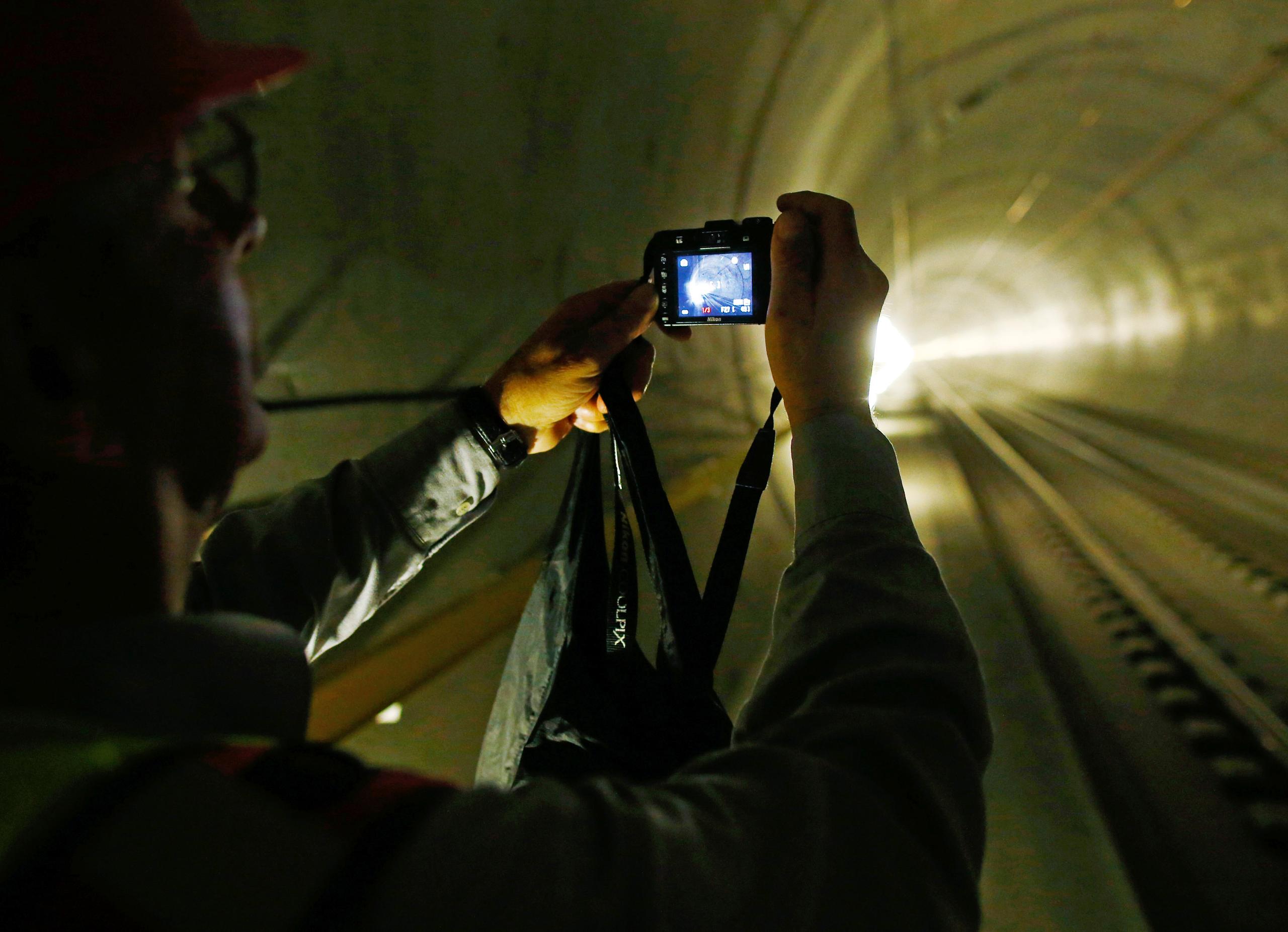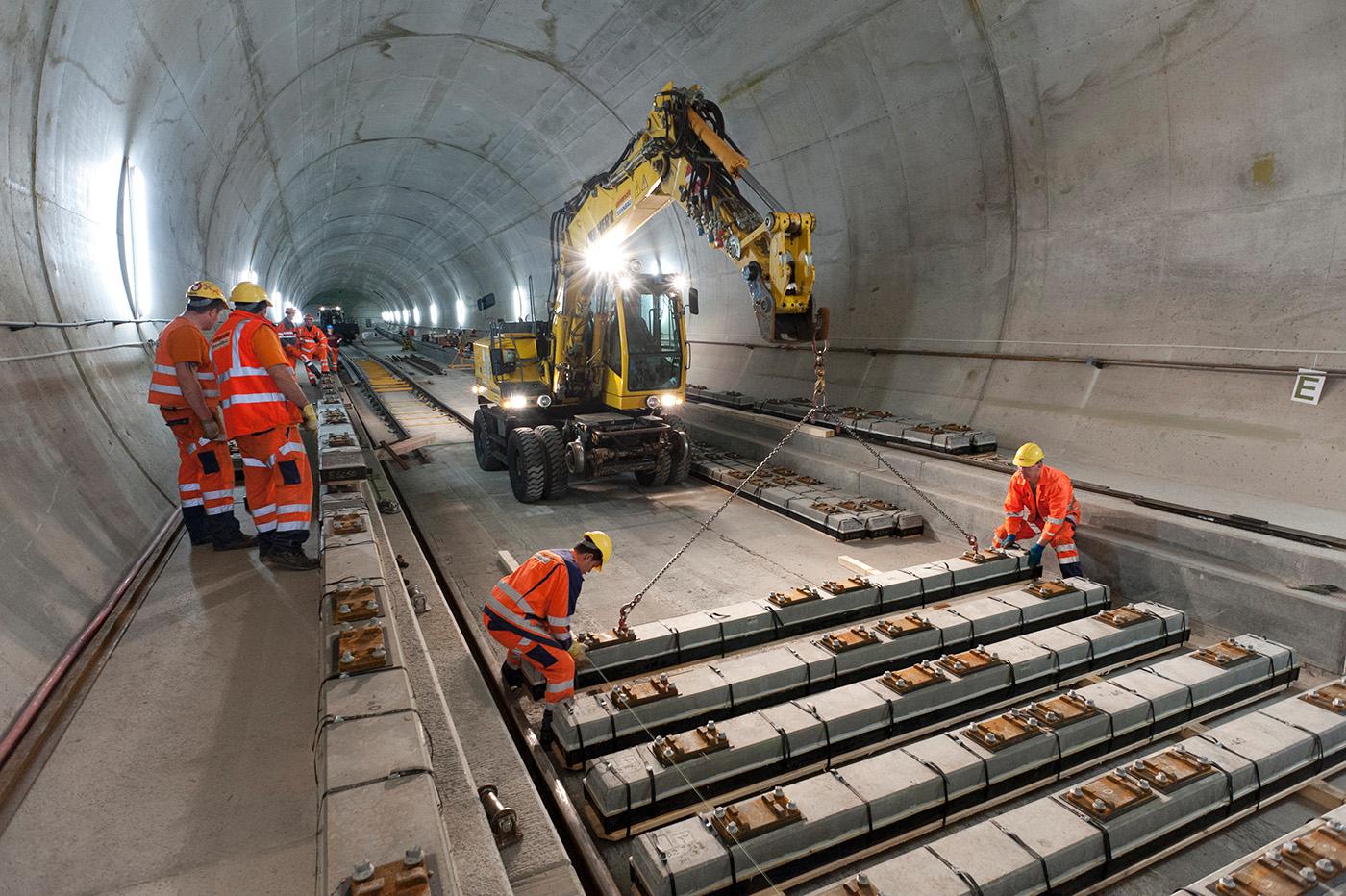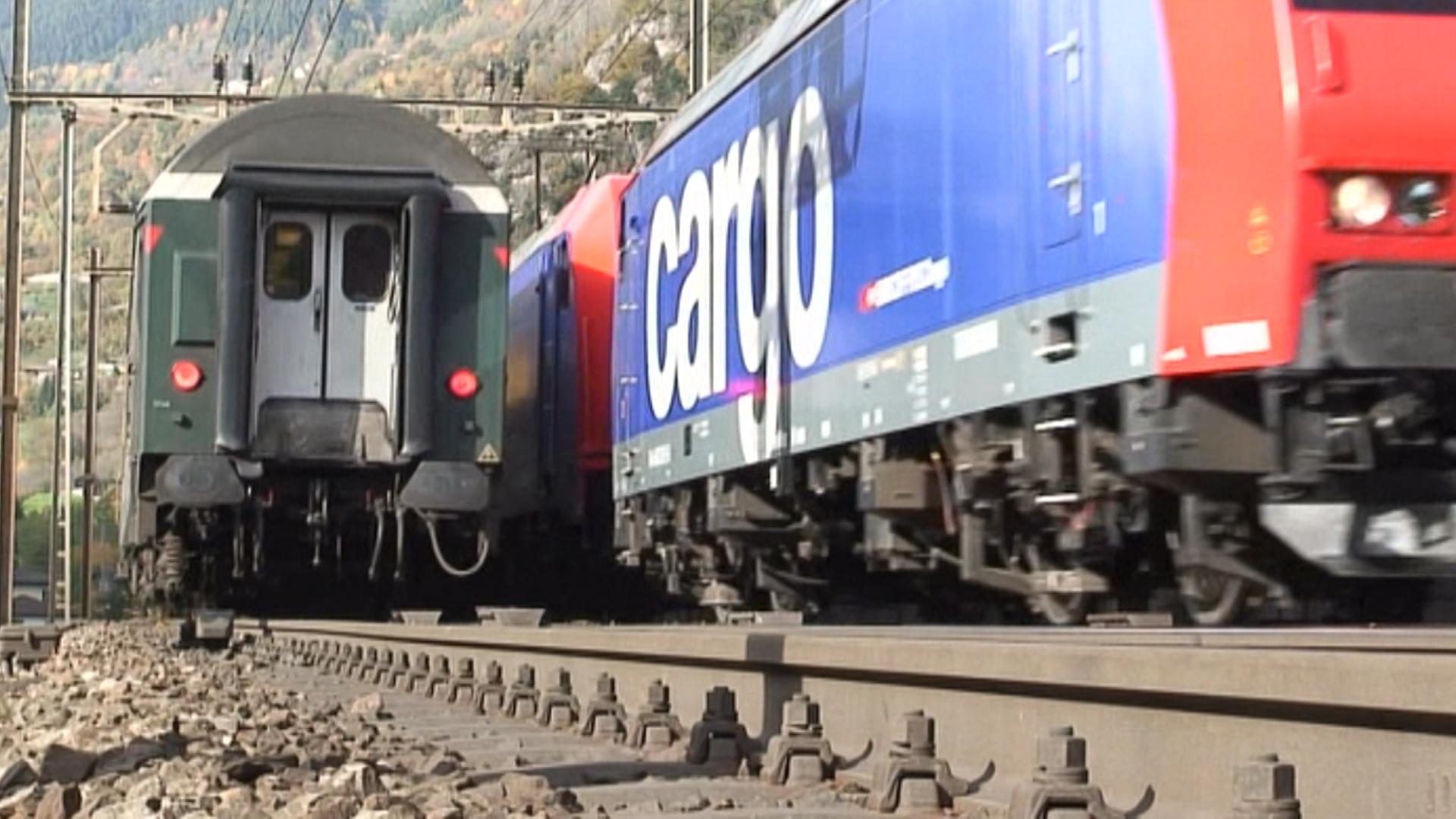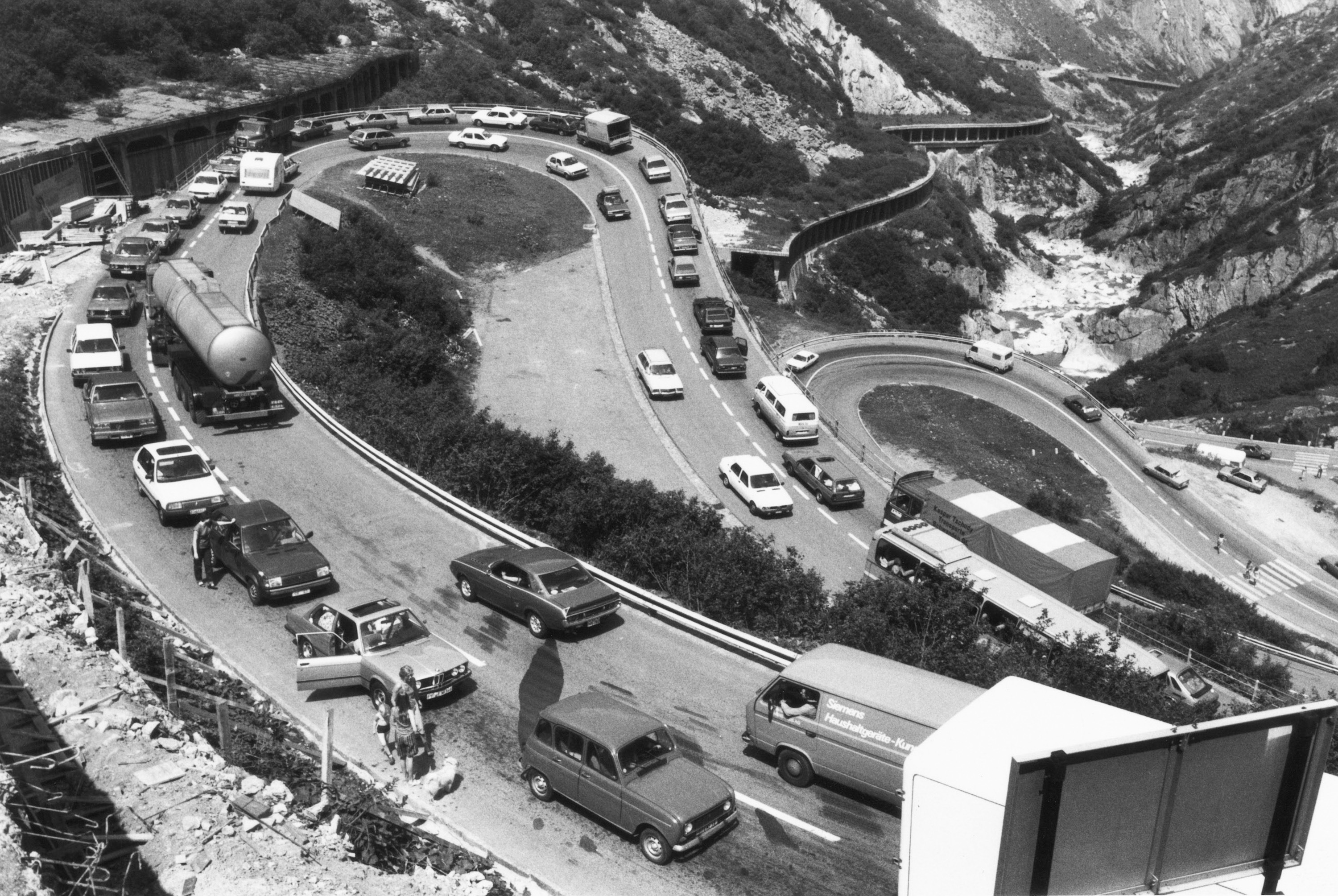New Gotthard tunnel garners worldwide admiration

As one of the biggest-ever construction sites in Switzerland, and due to open in a year, the Gotthard base tunnel has captured the world’s imagination. Hundreds of foreign reporters have come to see how the Swiss have dug the longest railway tunnel on earth.
“I remember going in one of the access tunnels quite a long way and then from a staging point there taking an elevator down deeper than the Empire State building is tall,” recalls Roff Smith, a photojournalist who wrote an article on the tunnel for the National GeographicExternal link.
A CHF12 million party
Festivities for the inauguration of the Gotthard base tunnel are planned from June 2-5, 2016. The Swiss government has invited 1,200 people, including Swiss and foreign parliamentarians, ministers, heads of state and representatives of international organisations. The budget for the event comes to about CHF12 million ($12.7 million).
Smith marvelled at “the sheer scale of the project, to bore a base level tunnel 57 km through the Alps” and the experience of “being in the heart of a huge mountain, with thousands of feet of rock overhead and seeing this huge construction project unfolding” as he told swissinfo.ch. The American reporter was especially struck by “the miracle of the huge TBMs [tunnel boring machines] and the way they were able to navigate through a mountain and meet up with only a few millimetres of deviation”.
Vito Tartamella, a journalist with the Italian science and technology monthly FocusExternal link, toured the site in 2014. What particularly fascinated him was how the Swiss had handled the problem of water inside the tunnel. “During the digging, water was a major cause of worry. At the same time it was a resource,” he says. Hot water coming from the tunnel will be used for heating, and for a fish and seafood farm near the north entrance. “This is a way to add value” to the project, as he points out.
Hundreds of journalists
“The interest abroad was great,” says Ambros Zgraggen, manager of press relations for AlptransitExternal link, the company running the project. BBC, CNN, National Geographic, Discovery Channel, television stations from Japan and Ecuador – hundreds of foreign journalists have visited the site, he told swissinfo.ch. He recalls that the greatest buzz came in 2010, when the workmen broke through the last few feet of rock to join the two sections of the tunnel.

More
Glimpses of the celebrations inside the new Gotthard base tunnel
As might be expected, the largest contingent of journalists came from the neighbouring German-speaking countries and Italy, according to the AlptransitExternal link spokesman. “This project of the century, by its sheer dimensions, arouses a great deal of interest in Germany, where they are working on big projects like Stuttgart 21 [a railway and town planning project in the German city] and Berlin airport.” Zgraggen points out that the theme of mobility is a hot topic in the south of Germany, a region particularly confronted with transportation problems.
Fascinated by trains and tunnels, journalist Tartamella notes that the Gotthard development is a topic that people living in the North of Italy are very aware of. “Either for tourism or business reasons, the idea of cutting down the transit time, say to get to Zurich, is a matter of great interest,” he says.
When the Gotthard tunnel is operational (the inauguration is planned for June 2, 2016), and following the opening of the new Ceneri tunnel (expected in 2020), the time needed to cross the Alps will be cut down by about 45 minutes. So it will take just about three hours to get from Milan to Zurich.
Unique achievement
The Gotthard base tunnel, which will begin operating on December 11, 2016 with the introduction of the new timetable, is the centrepiece of the New Railway Link through the Alps (NRLA)External link. This mega-project, which also includes the Lötschberg tunnel (2007), is intended to facilitate rail transport between northern and southern Europe. The excavation work has taken more than 15 years and CHF12 billion ($12.7 billion).
Klaus C. Koch, a journalist with the Süddeutsche ZeitungExternal link, was struck by the speed with which the tunnel was built. In big projects, he wrote in a 2011 article, delays are all too frequent. But the Gotthard base tunnel “broke all the rules” and the excavation was finished nearly a year ahead of schedule.
James Bedding, who toured the site in 2013 for the British TelegraphExternal link, was impressed by the long-term planning and the organisation he found in Switzerland. “I think it was this long-term vision that struck people in Britain, where there are continuous disputes and arguments about public transport,” he told swissinfo.ch.
Grassroots involvement
Alptransit has turned out to be high-speed project partly because the Swiss people were behind it right from the beginning, an aspect that is particularly appreciated in Italy, notes Tartamella.
“The project was put to a popular vote [and accepted] and consultation meetings were held with the local populations most affected. This probably helped to head off any protest movements, even violent ones, like those we have seen in Italy against the TAV high speed railway lines,” he explains.
Grassroots involvement in big projects is an aspect also appreciated in Russia, says Igor Petrov, who heads the Russian department at swissinfo.ch. “Debates about the necessity or otherwise of building tunnels are very topical in Russia, where building projects always seem to be carried out against people’s wishes,” he notes.
Japanese lose face
The technical and safety aspects greatly interest the Japanese, who travel a lot by rail, says Kuniko Satonobu, head of swissinfo.ch’s Japanese department. “A major Japanese newspaper did a story on the Swiss tunnel to find out what would be done in the case of an accident,” she says.
However, national pride is also at stake for the Japanese, adds Satonobu. “The Japanese are proud of their technology and love being top of the rankings. The idea that, in a year, the world record for the longest railway tunnel will no longer be theirs causes them some soul-searching,” she explains.
Yet the Japanese are still ahead of the pack in other ways. It was a Japanese train that set a new world speed record recently at 603 km per hour. This is a speed Swiss trains will not reach – inside the Gotthard tunnel they will travel at a mere 250 km/h.
Translated from Italian by Terence MacNamee

In compliance with the JTI standards
More: SWI swissinfo.ch certified by the Journalism Trust Initiative












You can find an overview of ongoing debates with our journalists here . Please join us!
If you want to start a conversation about a topic raised in this article or want to report factual errors, email us at english@swissinfo.ch.